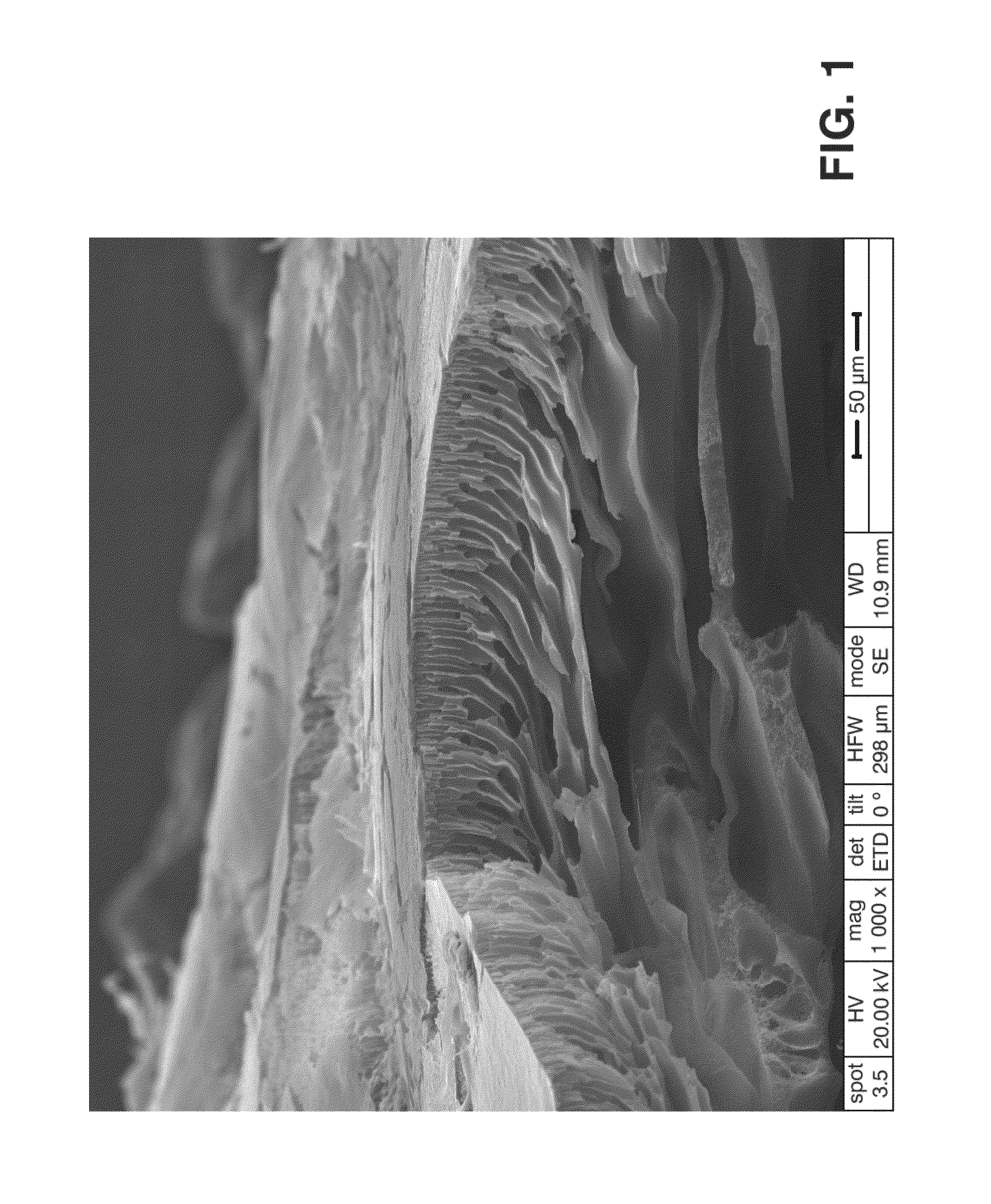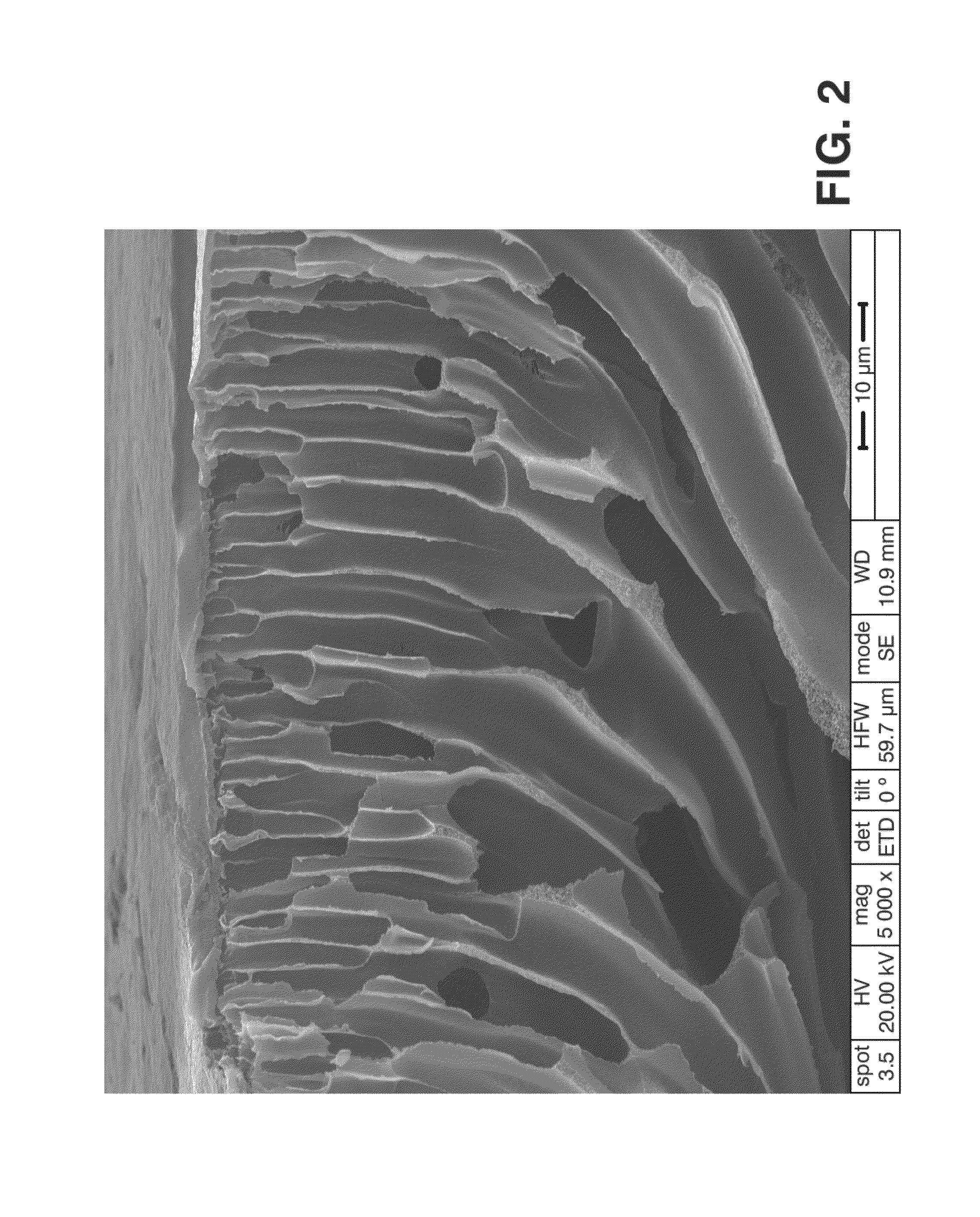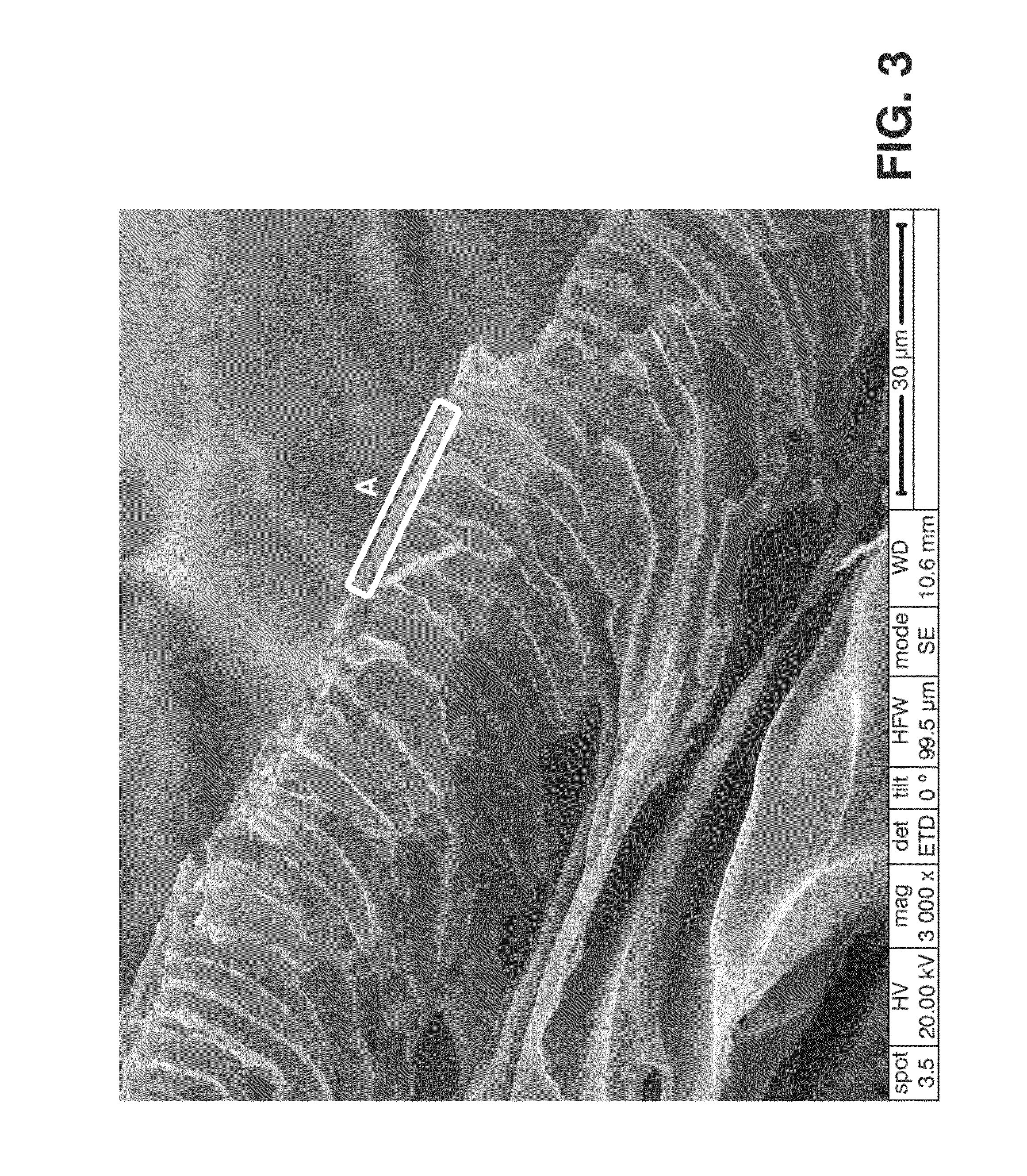Speek diaphragm for alkaline electrolysis and its use
- Summary
- Abstract
- Description
- Claims
- Application Information
AI Technical Summary
Benefits of technology
Problems solved by technology
Method used
Image
Examples
example 1
Preparation of the Membranes
[0086]9 g of PEEK previously dried in a stove at 80° C. for 10 hours were taken and were added to 100 mL of 96-98% sulfuric acid, therefore having a 4.7% PEEK concentration in the polymer solution. The three neck flask used allows sweeping with argon at all times to keep the reaction atmosphere with the lowest moisture content possible. After 8 hours at 40° C. it was removed from the sulfonation bath and the diaphragm was then prepared. To that end an amount of solution was placed on the glass support and, with the aid of Doctor Blade, a 600 micron thick polymer film was made. It was then immersed in the non-solvent bath (distilled water, temperature 20° C.) to cause the polymer precipitation with the desired characteristics for the diaphragm. Due to possible sulfuric acid residues inside the diaphragm, the latter was washed with distilled water until the pH thereof reached values close to 6. Finally the diaphragm was dried in laboratory paper for 14 hour...
example 2
[0088]Comparative example of alkaline electrolysis in the same operating conditions using a commercial Zirfon® membrane and 3 different diaphragms according to the invention.
[0089]The experiments were performed in a specific testbed developed by P&ID Technólogies® consisting of a power source, a single cell and the balance of plant necessary for simulating a commercial electrolyzer.
[0090]A comparison of operating results in a low power alkaline electrolyzer with natural recirculation, working at 40° C. with potassium hydroxide (33% by weight) as an electrolyte and with a current density of 0.4 A / cm2 can be observed in the following table.
[0091]The variables shown for their comparison are the voltage needed to carry out the electrolysis, generated by a current source establishing the electric current for having the stipulated current density with a given voltage consumption; and the HTO, i.e., the hydrogen content present in the oxygen stream at the output of the gas separator which ...
PUM
| Property | Measurement | Unit |
|---|---|---|
| Temperature | aaaaa | aaaaa |
| Temperature | aaaaa | aaaaa |
| Fraction | aaaaa | aaaaa |
Abstract
Description
Claims
Application Information
 Login to View More
Login to View More - R&D
- Intellectual Property
- Life Sciences
- Materials
- Tech Scout
- Unparalleled Data Quality
- Higher Quality Content
- 60% Fewer Hallucinations
Browse by: Latest US Patents, China's latest patents, Technical Efficacy Thesaurus, Application Domain, Technology Topic, Popular Technical Reports.
© 2025 PatSnap. All rights reserved.Legal|Privacy policy|Modern Slavery Act Transparency Statement|Sitemap|About US| Contact US: help@patsnap.com



